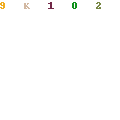Category — 1.6 Cognitive Development: Pre-Academic/Academic Skills
Pre-Academic/Academic Skills
It is very important to recognize and address the signs of delays in the pre-academic and academic (see full Glossary) areas in young children. Being aware of milestones (see full Glossary) and addressing any difficulties during the early years is likely to make a difference in the child’s learning and progress during his school years, and as he or she grows older. A child with these delays who does not receive help may be at risk when functioning within the school setting and in his/her daily activities.
Between 3 and 5 years old Some signs of pre-academic/academic delays may include the following examples.
If a young child:
- Does not group or separate toys or other objects, or put them into categories (see full Glossary); for example, ‘blueberries go in one plate and strawberries go in a different plate;’ (Fig. 1)
Figure 1: An example of categories
- Does not match (see full Glossary) pegs, toys or other objects of the same colour (for young preschool children); of the same colour and shape (for older preschool children); of the same colour, shape and size (for children in Kindergarten and older);
- Does not sort (for example: cannot tell which item goes with which: spoon goes with fork, shorts go with jacket);
- Does not recognize a pattern and continue it (for example: red blue, red blue…); this is a very important concept in the development of mathematical skills;
- Does not answer “why” questions (for example: Why do we eat? Why do we sleep?);
- Does not understand “cause and effect” relations (for example: the reason we can’t play with this toy is because you broke it.);
- Does not retell basic parts of a story;
- Does not describe what he or she is doing;
- Does not think about future events;
- Does not predict “what will happen next”, (for example: Mom forgot to turn off the water. What do you think will happen?);
- Does not count (Fig. 2: Counting toes);
Figure 2: Counting toes
- Does not show understanding of one to one correspondence (see full Glossary), which is one of the most basic concepts in mathematical development.
By age 6 years:
- Does not tell “which one has more” (for example: a plate with three strawberries and a plate with five strawberries);
- Does not perform simple addition activities (for example: If you have two pennies and I give you one more, how many will you have?);
- Does not perform simple subtraction activities (for example: If you have three crayons and I take away one, how many will you have left?);
- Does not recognize letters of the alphabet;
- Does not recognize own name in print;
- Does not read simple words;
- Does not copy letters (from memory or an example);
- Does not copy simple words (from memory or an example);
- Does not copy own name (from memory or an example).
February 24, 2011 No Comments

